As Much Light as Shadows


As Much Light as Shadows


Step back, and Cayce Zavaglia’s cross-stitched portraits are paintings, their subjects softly alive, every detail rendered with precision. Step forward, and they are abstract grids of stitched Xs that you cannot imagine as to how they would conjure such a portrait. You step forward again, forced to participate and realize Cayce is making bits of wool do the work of paint. This play of illusion and opposition began in 2000, when Zavaglia became a mother. Determined to have a nontoxic studio, she poured out all her turpentine. Then came the epiphany: instead of putting craft into her art, could the craft be art? She began painting with wool, changing the direction of her embroidery stitches to pick up shadows and create the illusion of depth.
These portraits are larger than life, not small and delicate ovals worked on a hoop in her lap. She wanted to get embroidery out of women’s laps and find new possibilities for this ancient and often underestimated craft. Refusing to elaborate or prettify, she made her “embroidery” hyper-realistic and true to the tiniest detail. Your eye pauses again and again, delighted by the stitched hem of an undershirt, the sheen of a button, the creases in skin, all perfectly described, alive
She tested her new medium, pushing the wool to express thousands of colors and textures. When she needed her next challenge, she played with opposites again, asking herself what kind of needlework she least wanted to do. The answer was easy: counted cross-stitch. She had loathed it as a kid, and she still had no interest in its tedium. But, what if she created the illusion of cross-stitch?
Close up, the Xs looked modern, stylistic, abstract. Tilt them slightly, and you enter the realm of traditional religion, which would add a layer of significance or controversy for the viewer. Intrigued, Zavaglia dipped a nib in ink and began a portrait made of tiny Xs. She chose blue ink as an allusion to the iron-on transfer patterns from the 1930’s. Next, she made a colored-pencil portrait of her daughter Raphaella. Instead of beginning with a professionally lit portrait with its subject carefully posed and looking straight at the camera, Zavaglia deliberately grabbed a casual, throwaway shot from her phone. We see Raphaella, her eyes hidden by cool sunglasses, looking into the distance. We cannot even see her eyes, yet the image has all the immediacy, emotion, and complexity of the direct gazes in Zavaglia’s earlier work. How she has managed this is part of the work’s mystery. Is it the Pointillist precision with all those bits making a seamless whole or is it the warmth of the wool absorbing all the light and pulling you straight in?
She isn’t sure herself but after that colored-pencil portrait, all her resistance fell away, and she picked up a needle and spent months cross-stitching a large-scale version. In this Raphaella, there are background details that, along with the landscape reflected in the sunglasses, shift us away from a domestic intimacy like Vermeer’s and open Raphaella to the world.
What is most striking about Zavaglia’s cross-stitch portraits is how many moods these Xs can capture. Some subjects look serene, others as though they were caught unaware. Rocco at 16 a follow-up to the tightly embroidered, richly colored Rocco at 7 is stitched only in shades of embroidery-transfer blue. In the first work, the embroidery holds the image together, and if you come close, the stitches look like brushstrokes. The more recent portrait which looks just as painterly from a distance is broken into abstract bits, and the white spaces between the Xs vibrate, adding an almost nervous energy to her son’s thoughtful gaze.
Zavaglia likes to keep us wondering. Wait, is that one stitched? Are those stitches actually paint? Is that ink or wool or cyanotype solution or gouache? She also plays with size, at times bringing her work a little smaller, then taking it large-scale again. The process is methodical, yet the result is startlingly intuitive.
Unspoken, for example, is a chaotic, arresting, 5 foot square mix of her own stitching’s underside. It is composed of vintage needlepoint, a scattering of delightfully lowbrow pom-poms that refuse to take themselves seriously, and, mixed into the darkness, the added texture of beads, sequins, and costume jewelry. The portrait’s knots and snarls convey indecision, the wide eyes and parted lips, uncertainty. COVID-19 had torn away our comforting assumptions, just as 9/11 had. We were vulnerable and “all that mattered at the end of the day was family and love.”
Family and love are not typical terms for a contemporary art manifesto, but they thread through Zavaglia’s work. The pun is made inevitable by her work’s continuity, one piece bound to the next by blood as well as art. Her dream was always to be both an artist and a mother, and she saw no tension between the roles. Rather, she was struck by how similar they were: the late nights, the second-guessing of your own decisions, the slow unfolding and lack of any guarantees, the unseen and unpaid labor, the exhaustion, the tenderness.
With humble, everyday crewel wool, she paints silence, hope, innocence, struggle. To maintain creative momentum in the studio and in between those massive, painstaking portraits, she takes fragments of paintings she loves and reinvents them into tender ink drawings. Or, as in her latest exploration, she turns them into cyanotypes. They, too, are blue: the color of beginning, for generations of cross-stitchers, and one more note of continuity in her work.
Zavaglia’s cyanotypes are fresh, fluid, contemporary. The images have gone down as freely as ink spatters, and the process takes ten minutes instead of the ten months a cross-stitch portrait can take. Still, there is alchemy involved. The finished work will carry traces of the sunlight or clouds that shaped its exposure. Some pieces will feel finished already; to others, she will add hand-stitching or highlights, fuzz the embroidery, or spray on a neon color that brightens the work. The subjects come from the kaleidoscope of images in her mind, some she has loved since she studied art history, others she encounters in our image-driven world.
Portrait began with one of her mom’s old passport photos and took on accidental mystery. Prayer incorporates a fragment, taken from an old masterpiece, of a monk’s quiet face and folded hands. With Zavaglia’s skillful cropping, even details from works painted centuries ago look so modern and time collapses. It’s a trick she likes to play.
Centuries have elapsed since the Coptic cross-stitching found in Egyptian tombs, since the silken cross-stitch of the Tang Dynasty and since the cross-stitched geometrical borders on medieval Romanian blouses. Now Zavaglia has pulled that simple X into portraiture, using wool to describe the light reflecting on a lower lip, the corner of an eye, or the fasten of a button, and creating color illusions with techniques impossible to imitate. In her hands, wool has startling powers. “I feel,” she says, “like it’s not done showing its potential.”
Jeannette Cooperman is a staff writer for The Common Reader, a journal of the essay based at Washington University. Her doctorate is in American studies, and her master's focused on symbol and meaning in the visual arts. Author of seven books, she has won national awards for investigative journalism and cultural analysis, and her work has been cited in Best American Essays.
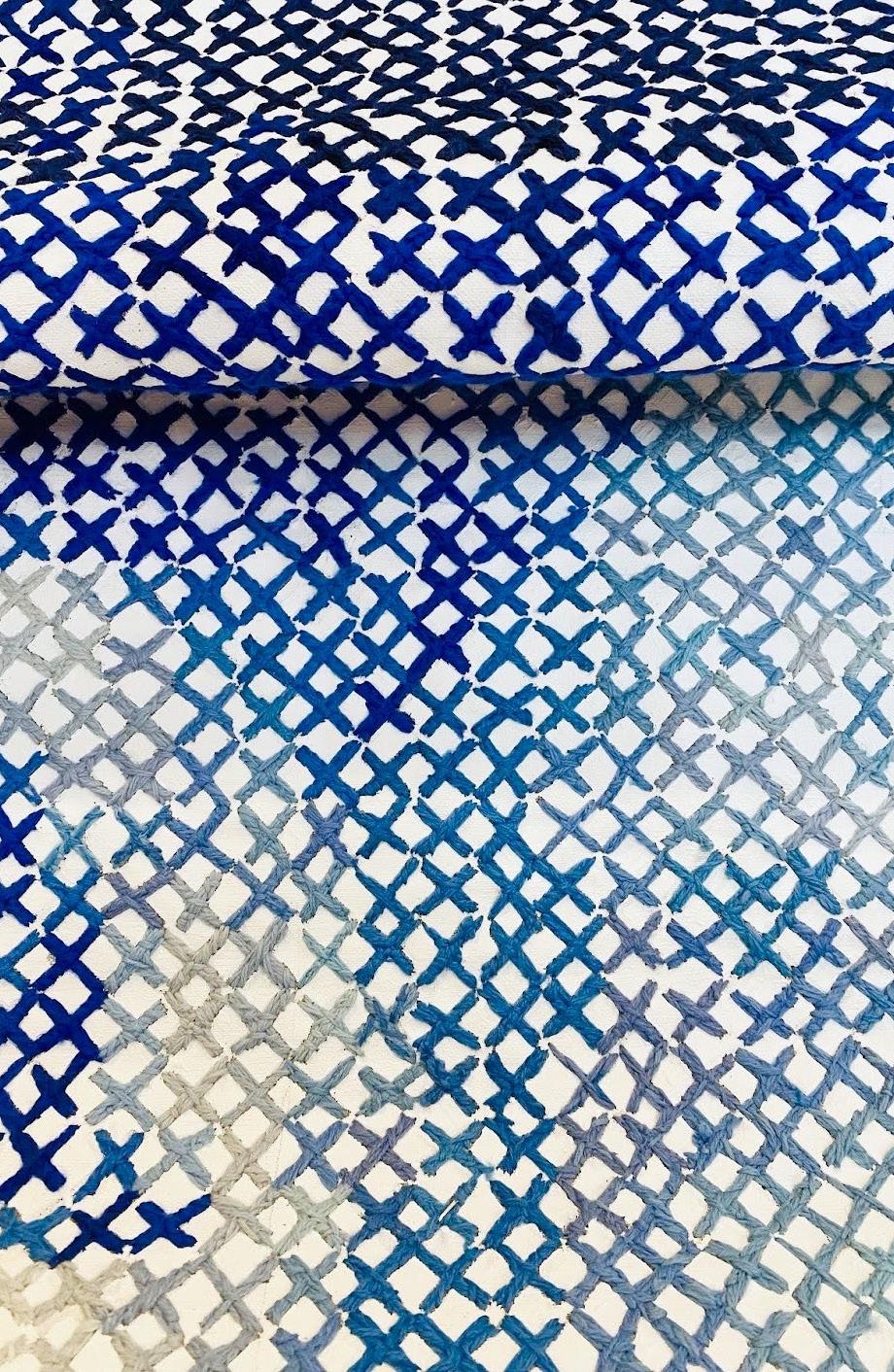
Rocco at 16 , 2022
Hand wool embroidery and acrylic on Belgian linen
95 1/2 x 80 1/2 inches
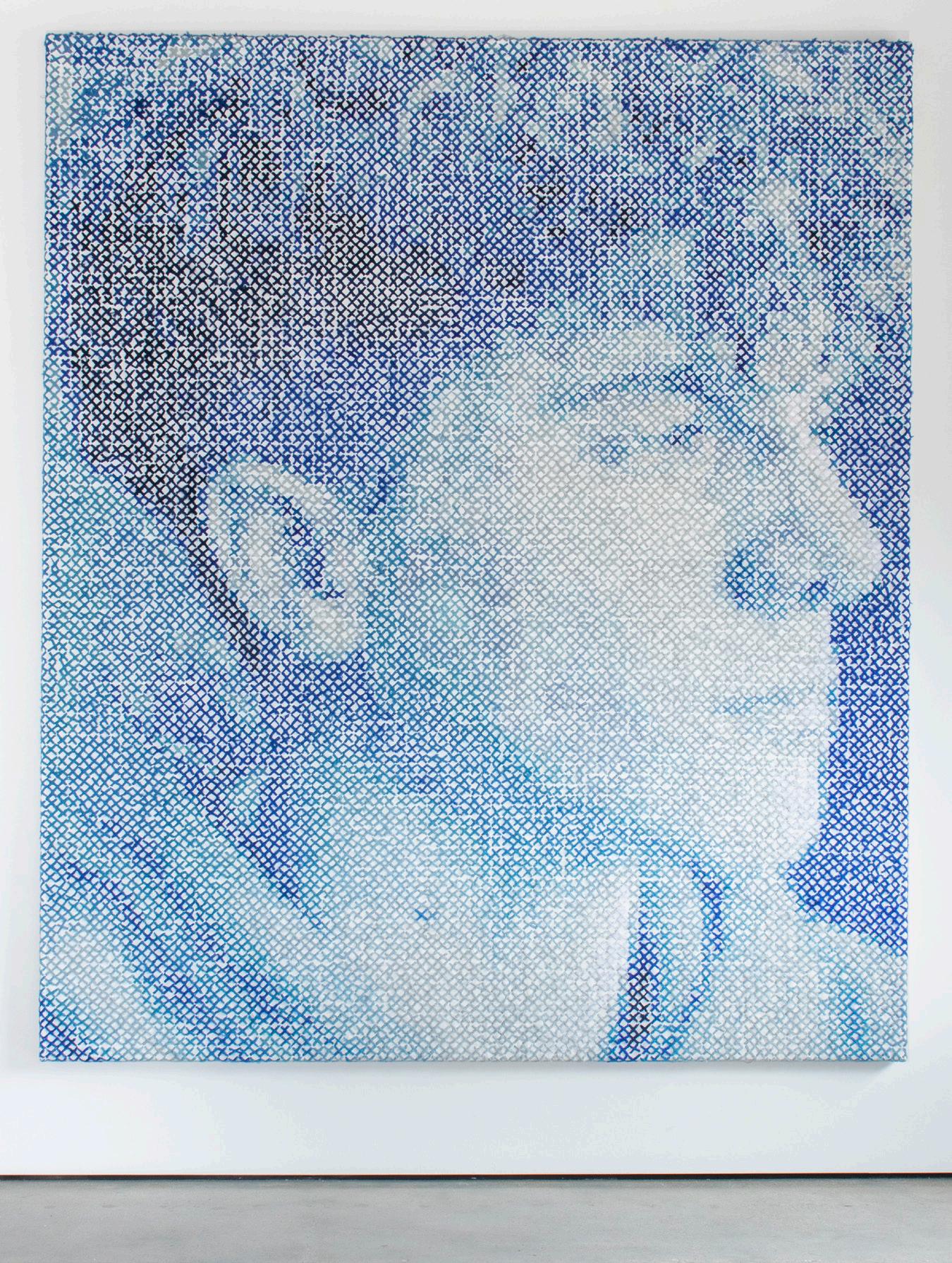
ForWhitney(AfterVanOosterwijick) , 2023
Wool cross stitch on red canvas with sequins
30 1/2 x 28 1/4 inches
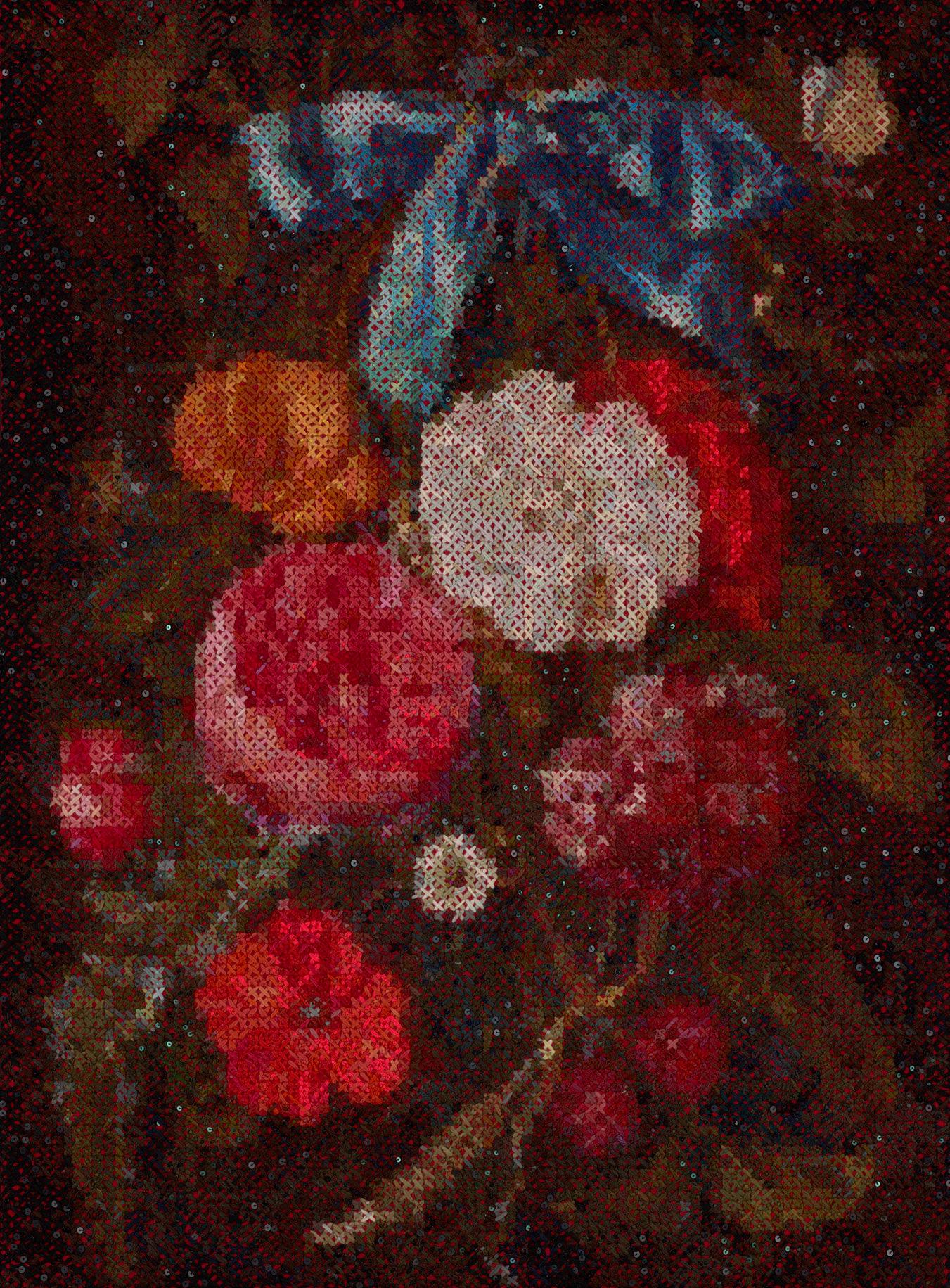
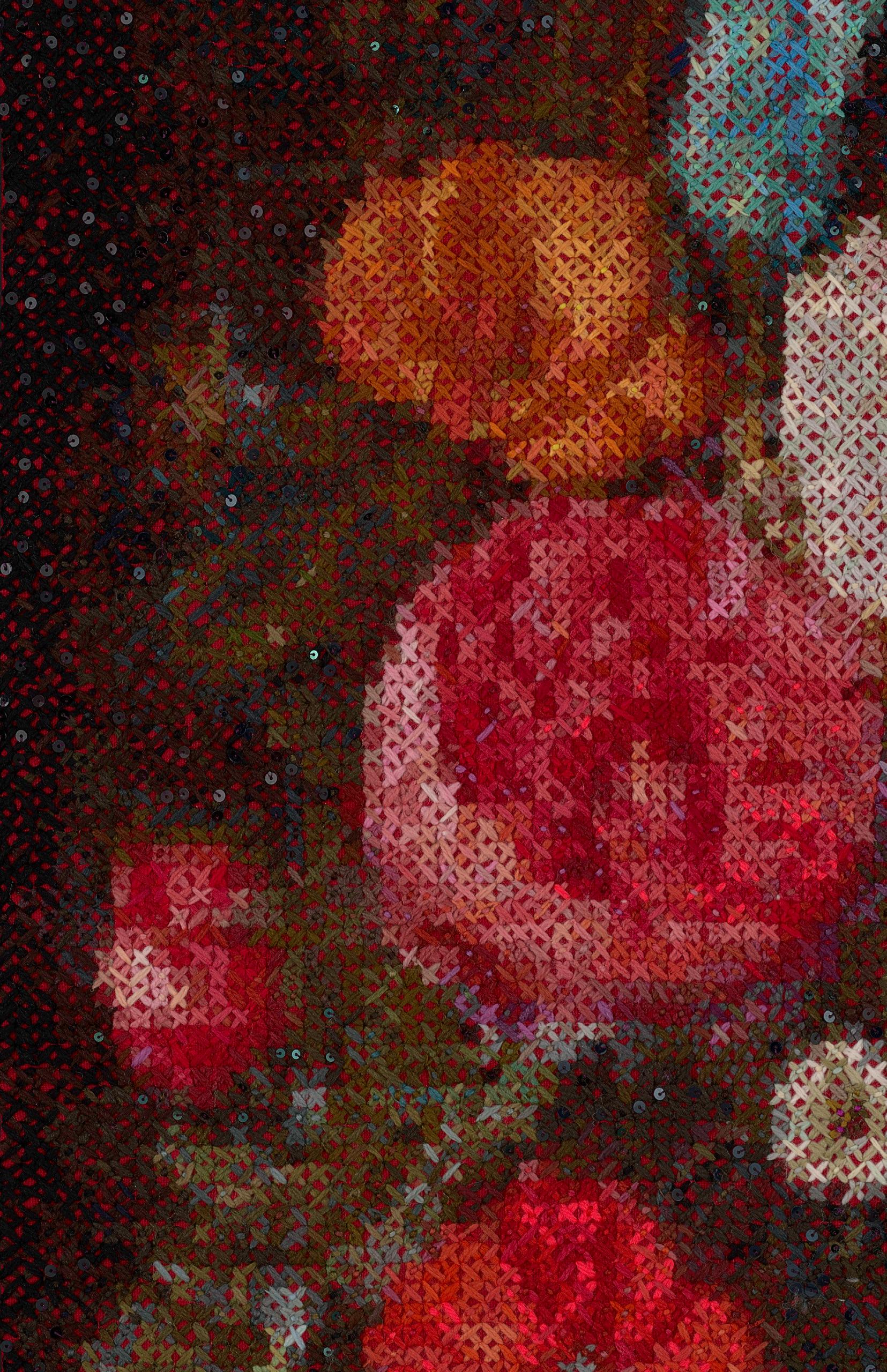
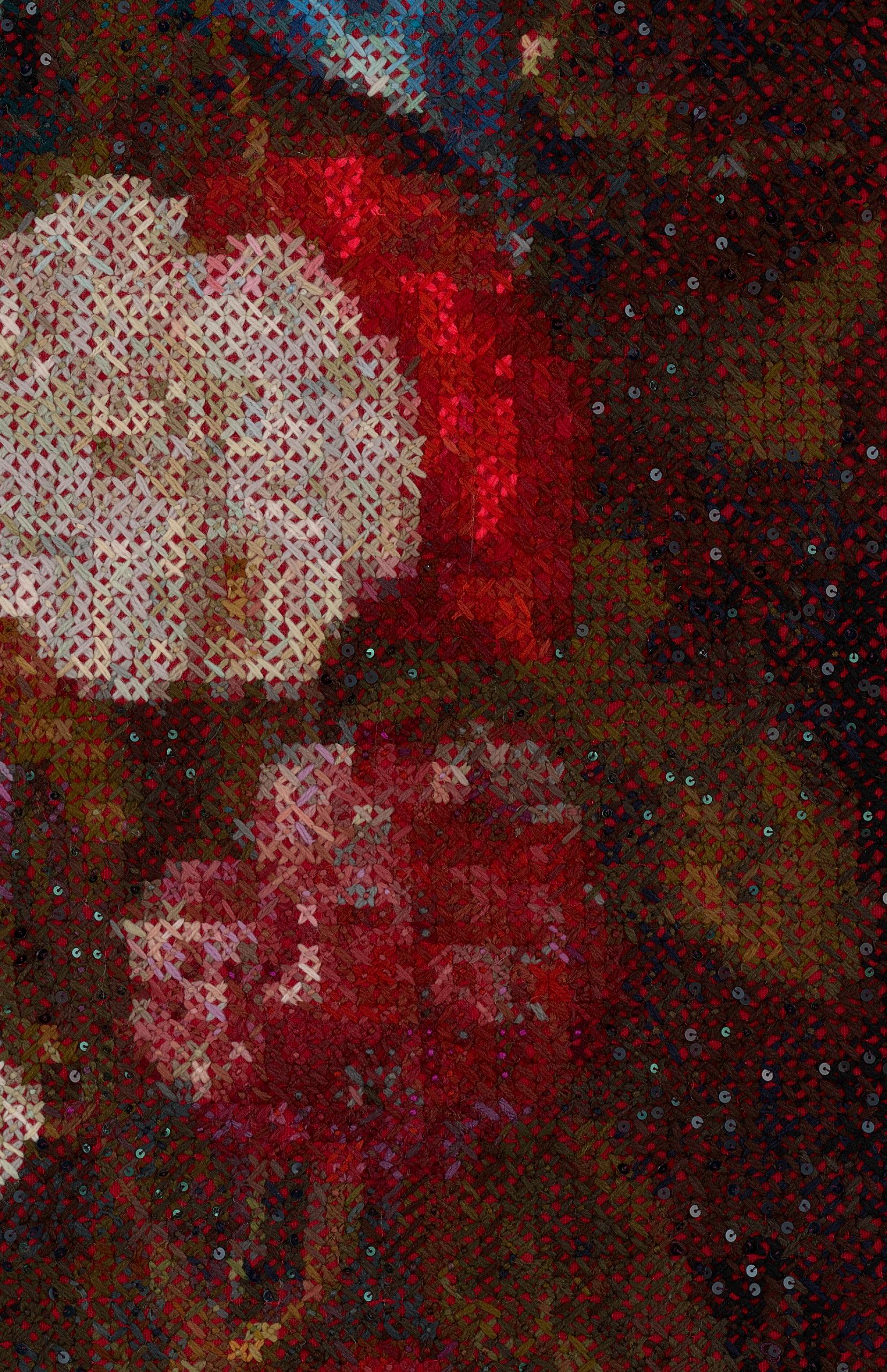
Raphaellaat21 , 2023
Hand embroidery: wool on Belgian linen in aluminum frame
56 x 45 1/2 x 2 1/2 inches
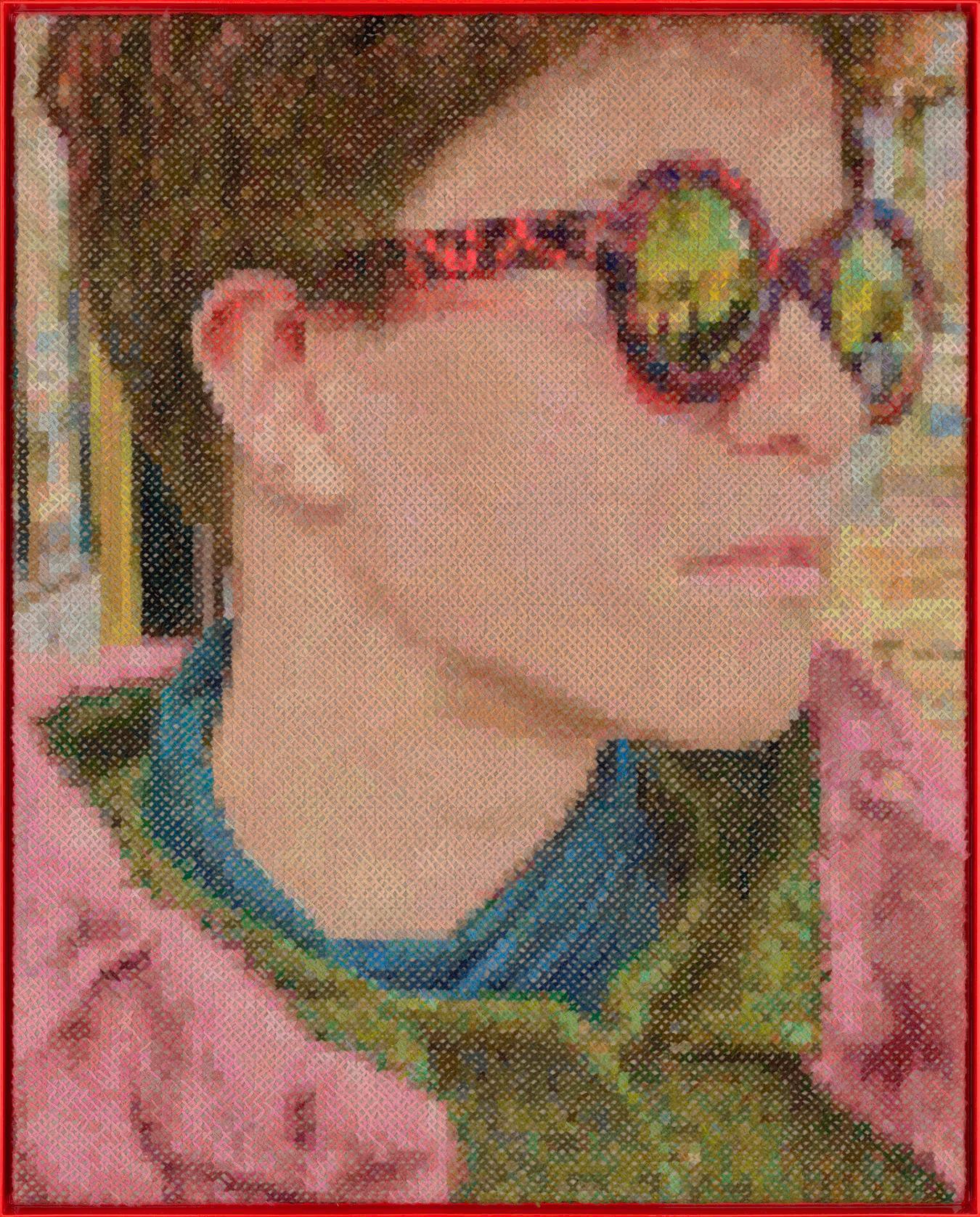
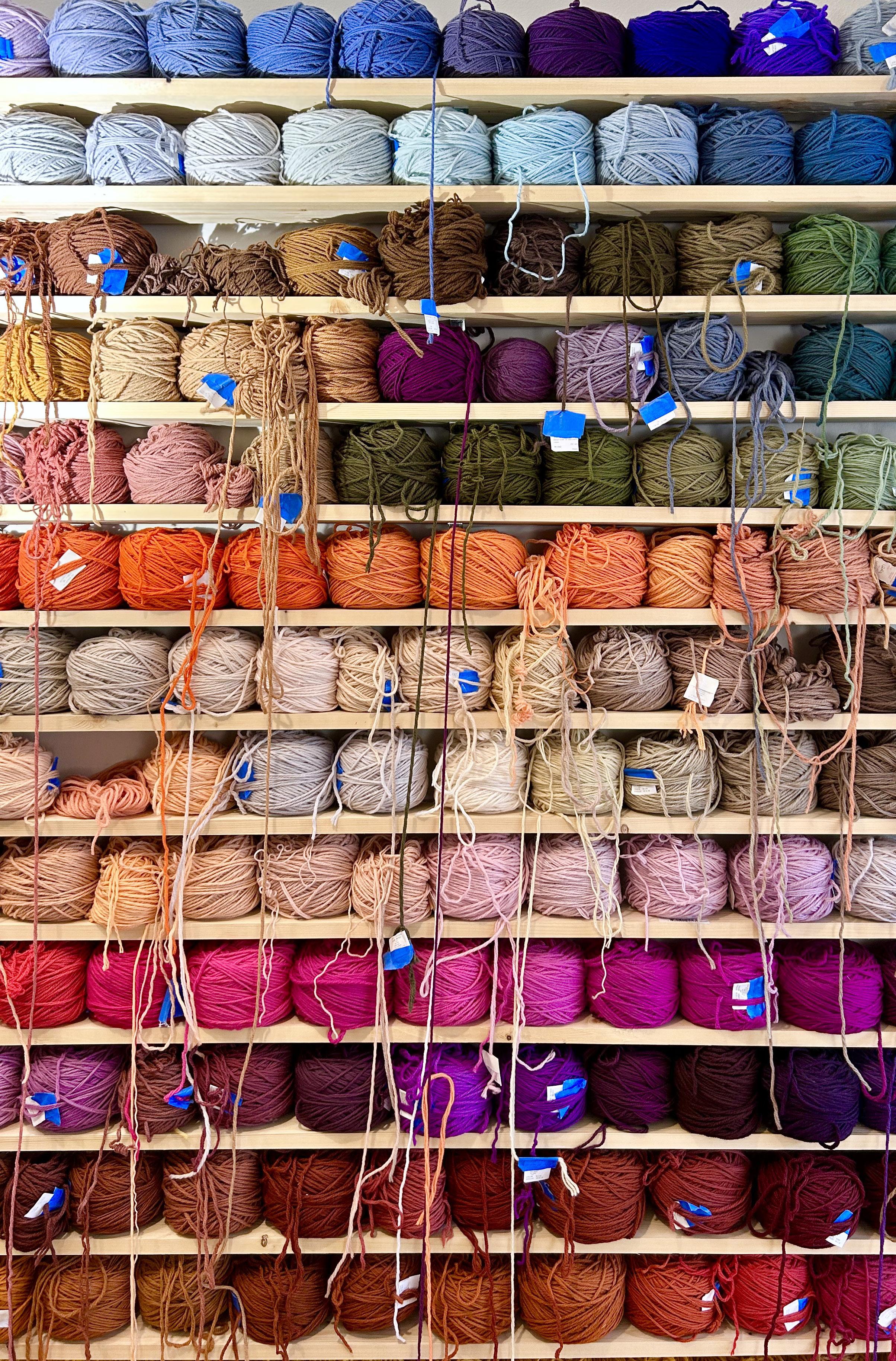
Unspoken , 2021
Hand wool embroidery, acrylic, vintage needlepoint, Pom Poms, sequins and costume jewelry on raw Belgian linen
68 x 71 1/4 inches

Rocco at 7 , 2023
Hand embroidery: wool on linen with acrylic background
30 1/2 x 28 1/4 x 1 1/4 inches



Dad , 2007
Hand embroidery: wool on linen with acrylic background
14 x 39 inches
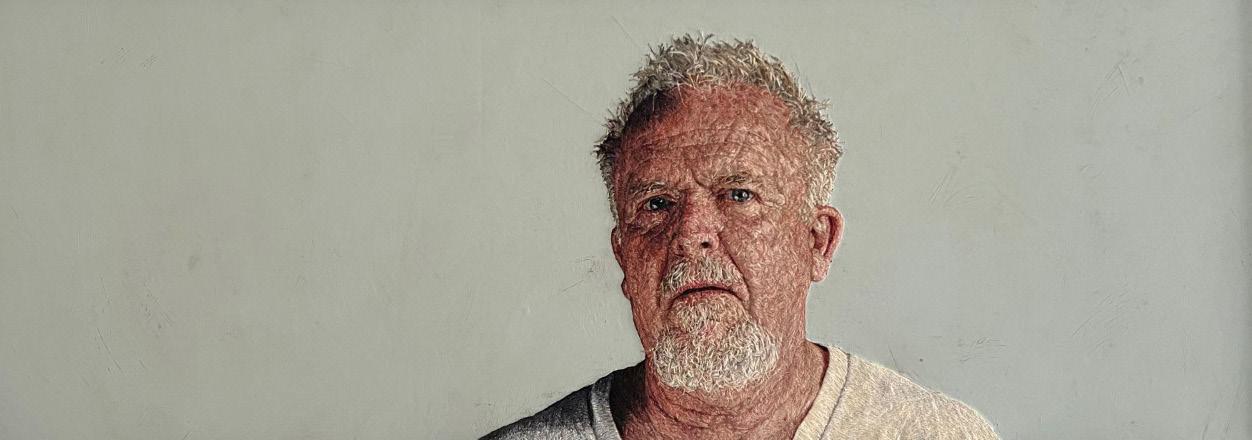
Hand embroidery: wool on linen with acrylic background
8 3/4 x 7 3/8 inches
Luca , 2020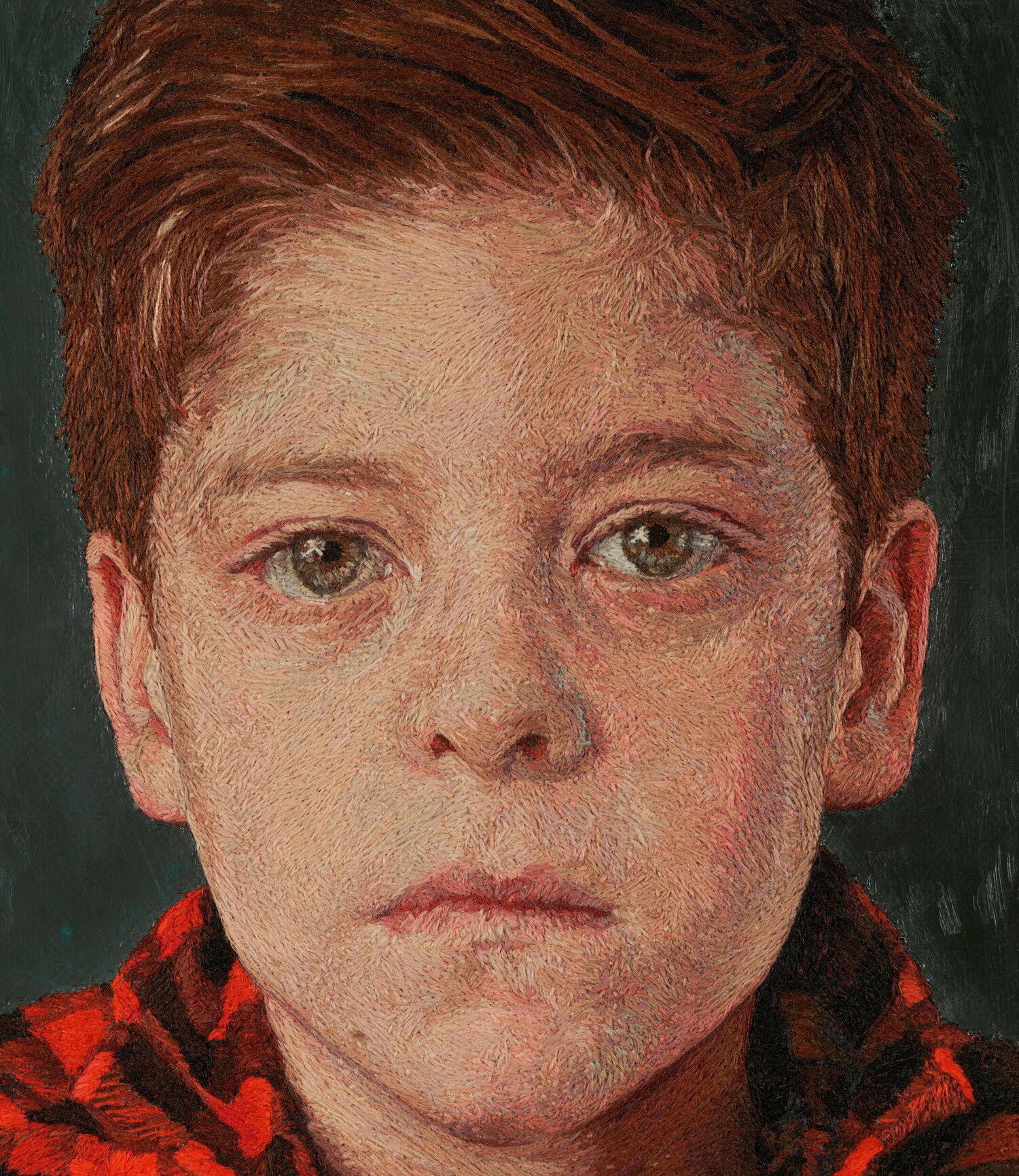
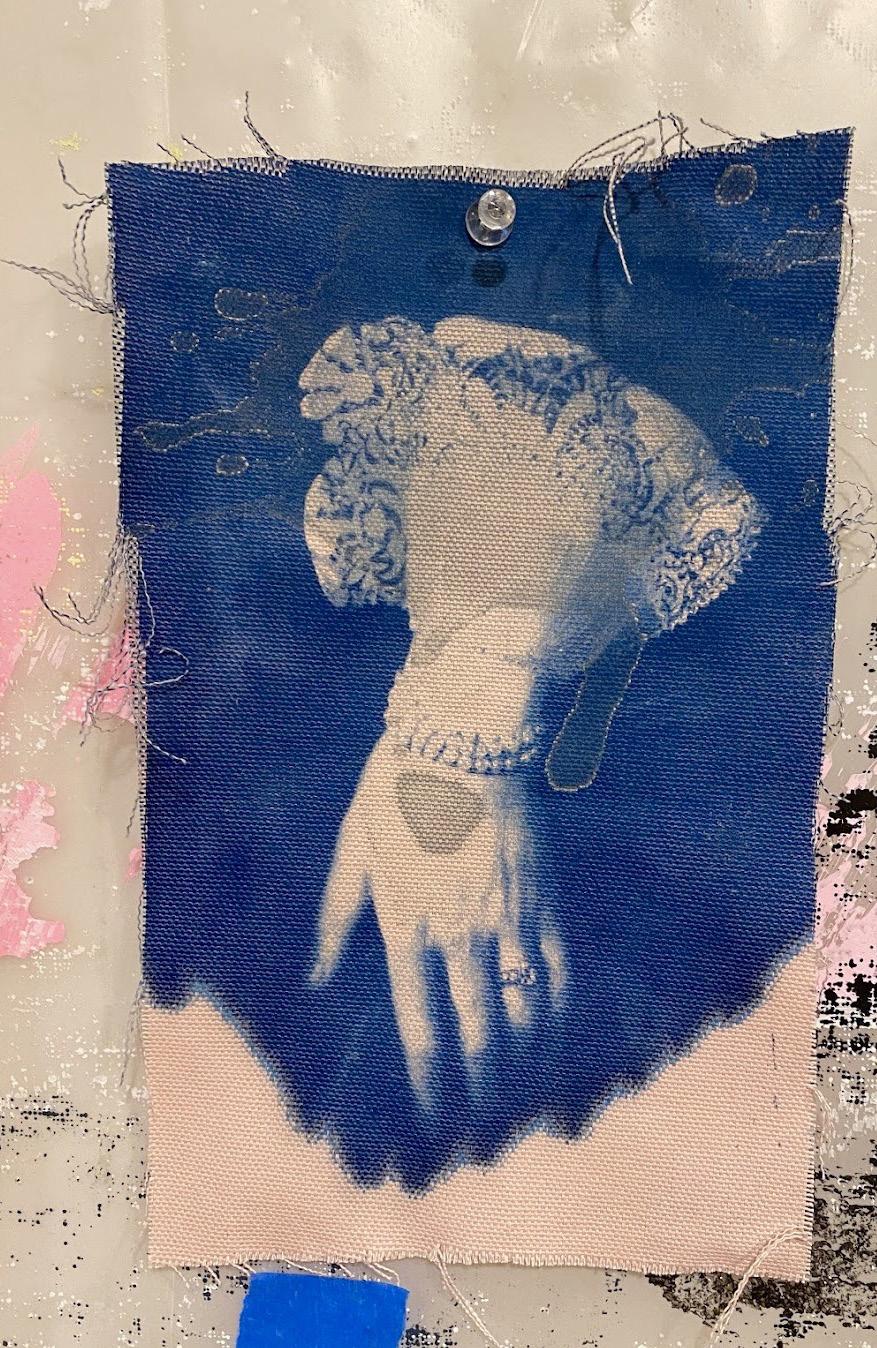
Portrait, 2023
Cyanotype
10 3/8 x 7 1/2 inches
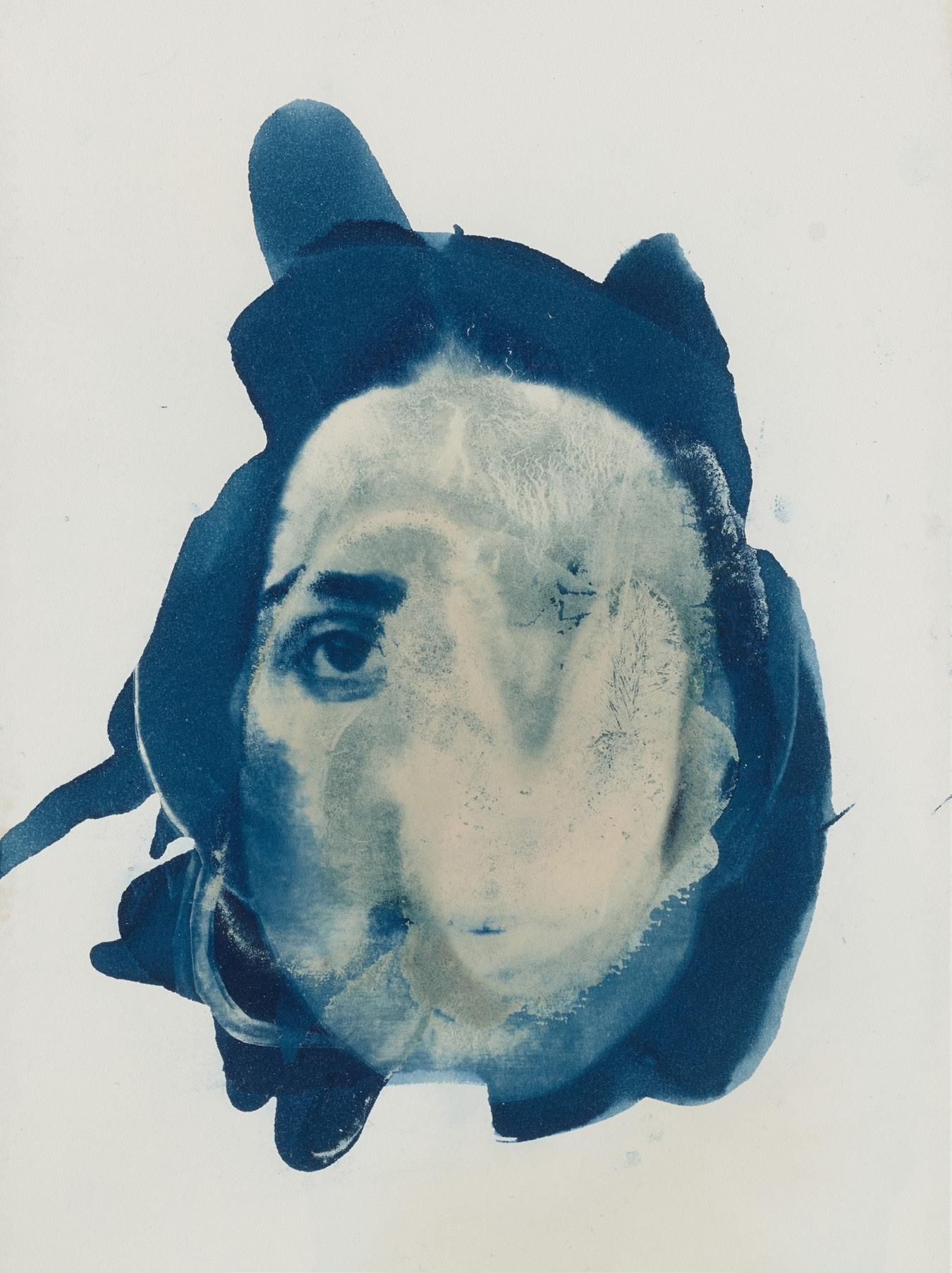
Propaganda,2023
Cyanotype with hand stitching
18 x 24 inches
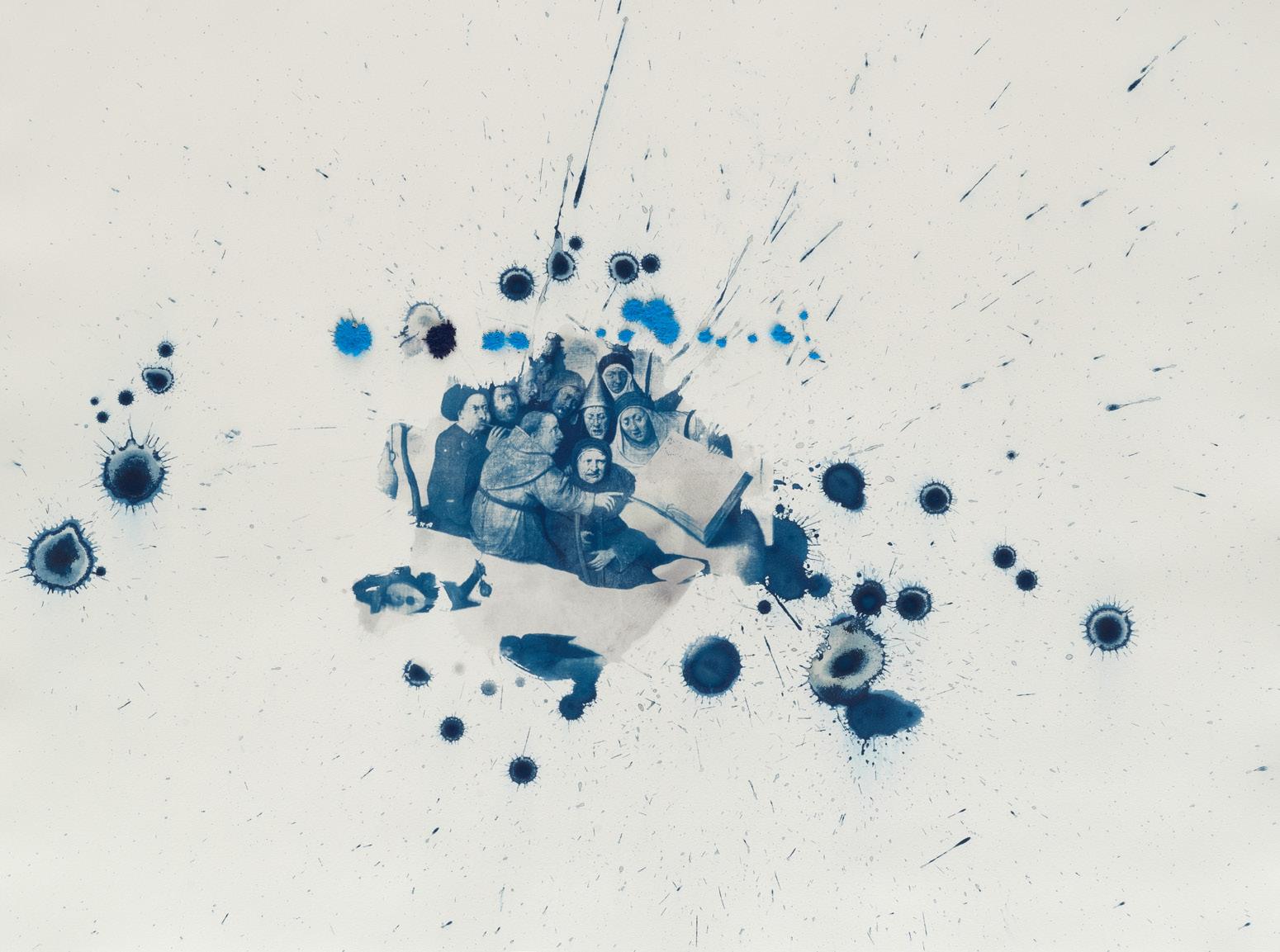
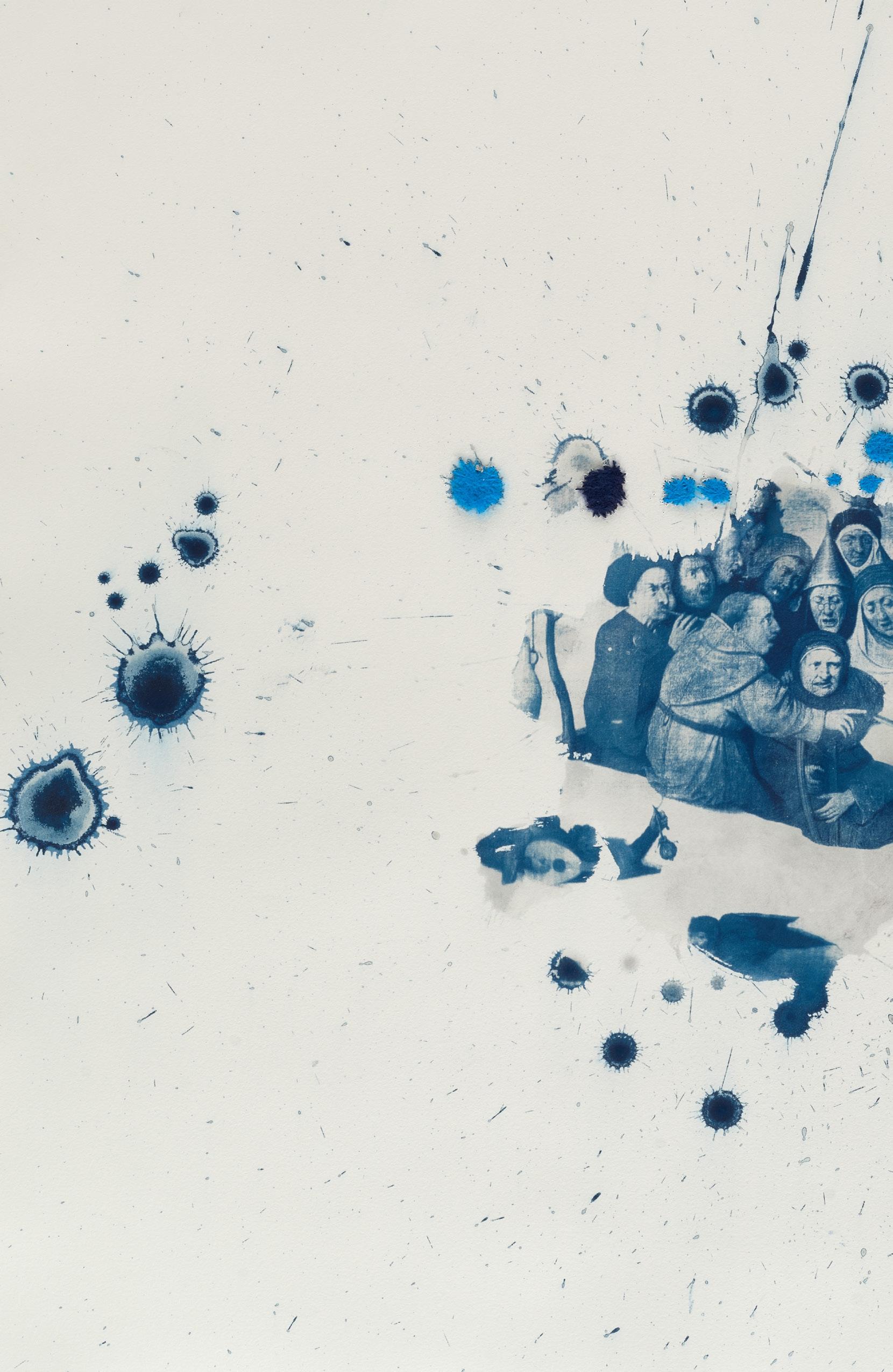
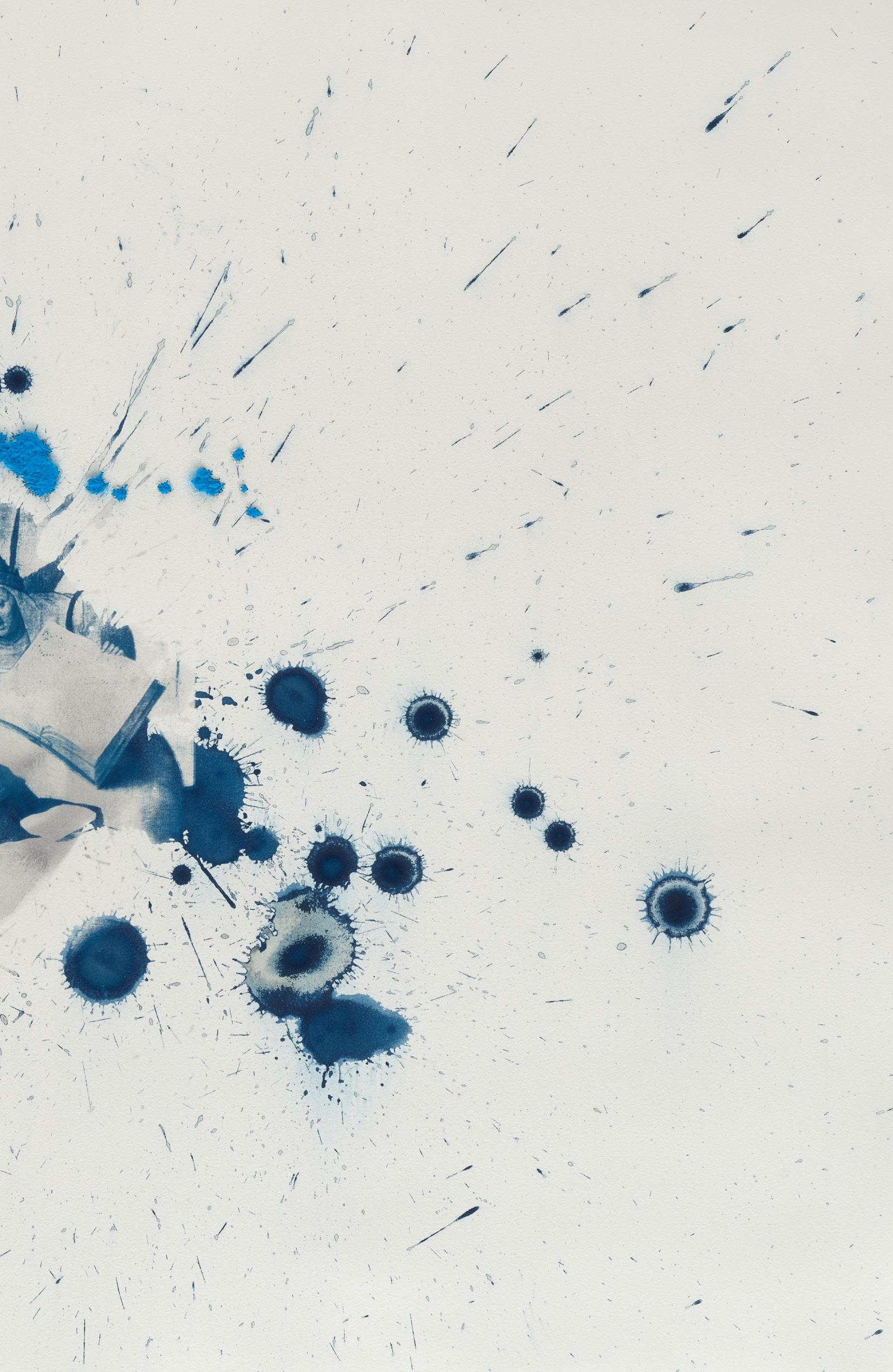
Prayer, 2023
Cyanotype
14 7/8 x 11 1/2 inches

10 1/8 x 7 inches
Pup, 2023 Cyanotype with spraypaint
Peace, 2023
Cyanotype with spray paint and hand stitching
17 x 12 inches
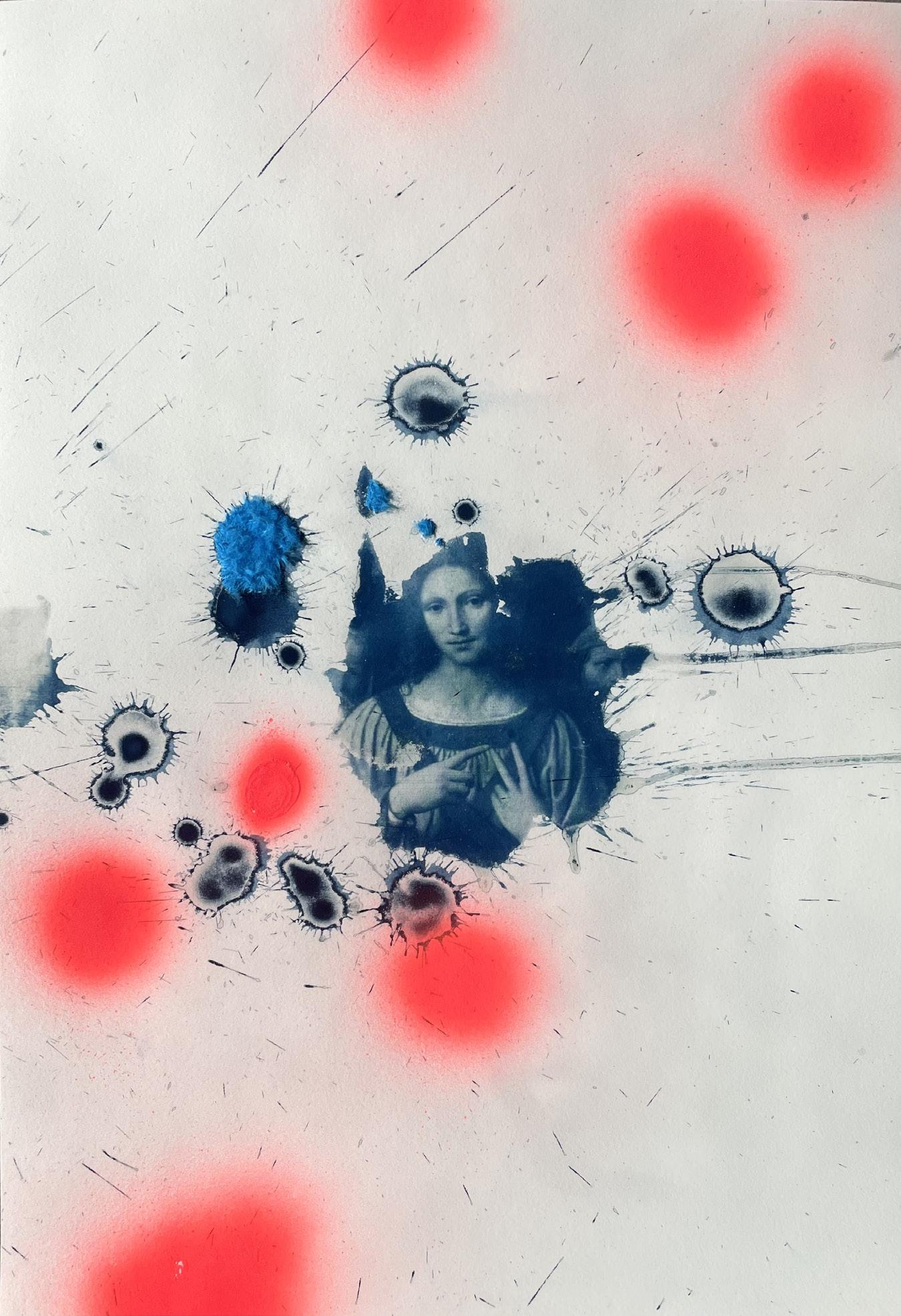

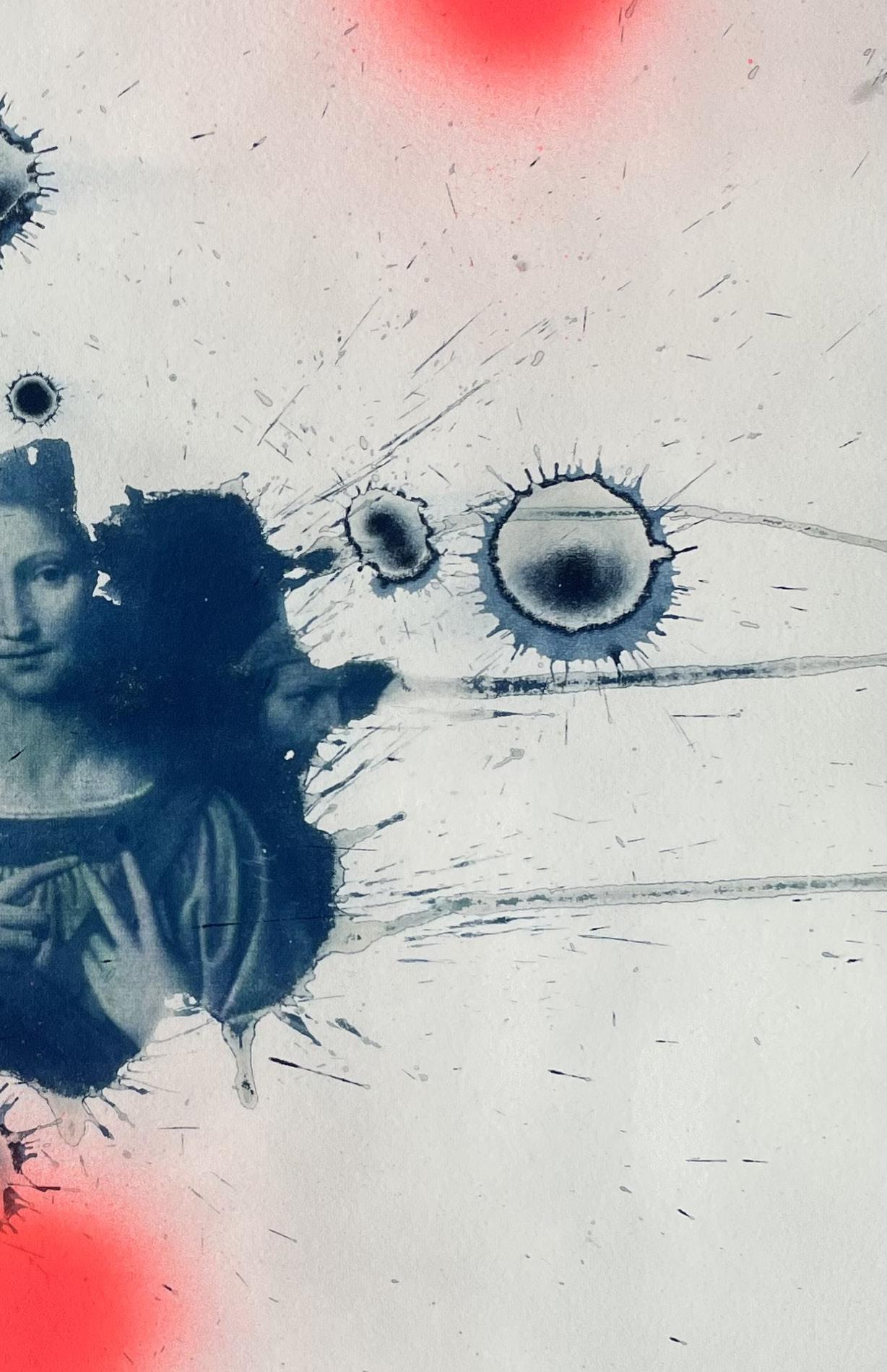
Portraiture, 2023
Cyanotype with hand stitching
12 x 9 3/4 inches

Promise, 2023
Cyanotype with hand stitching
12 x 8 1/4 inches
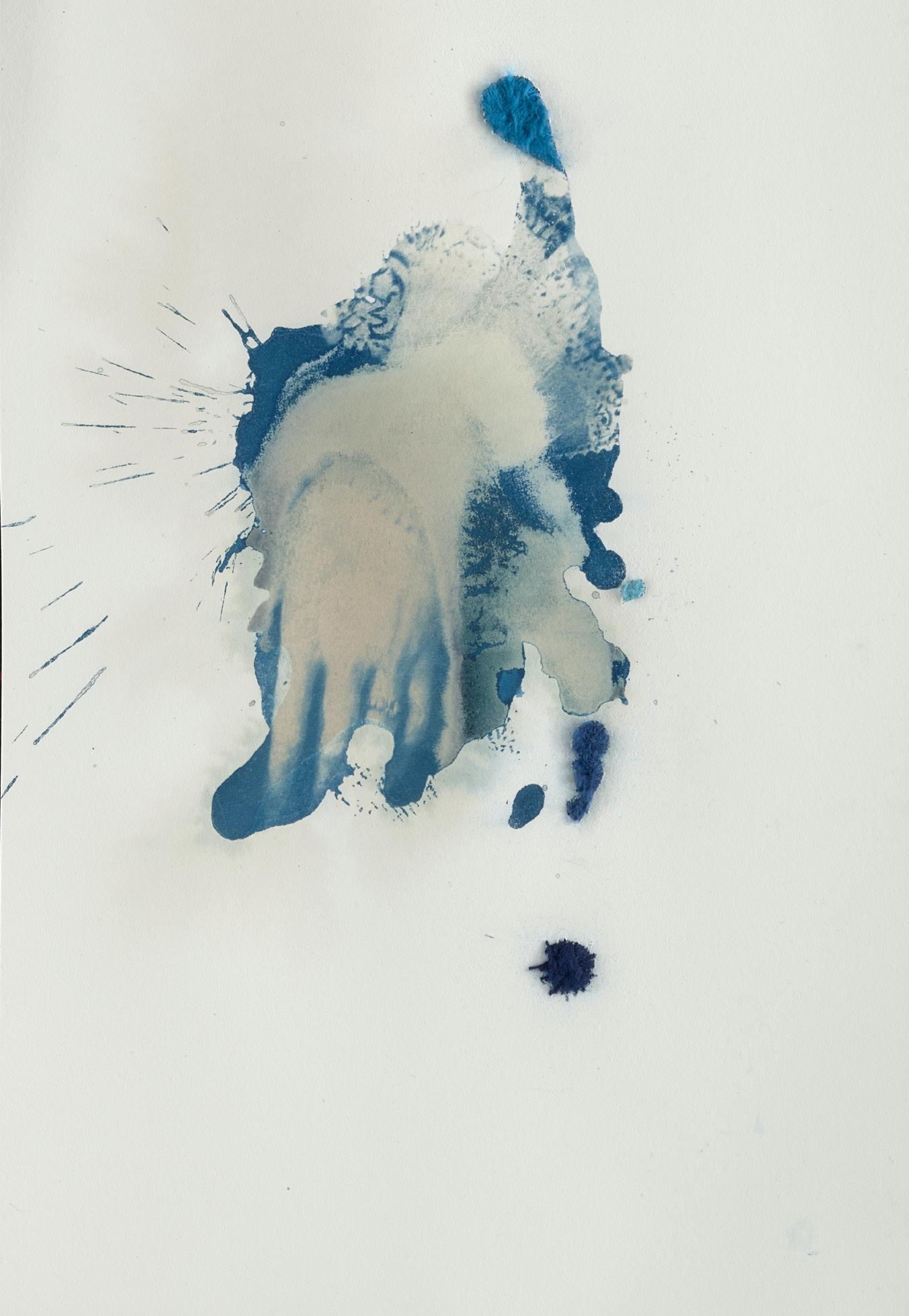
Pain, 2023
Cyanotype with hand stitching
15 1/16 x 11 1/2 inches

Protection, 2023
Cyanotype, spray paint and acrylic on Arches paper
9 x 12 inches

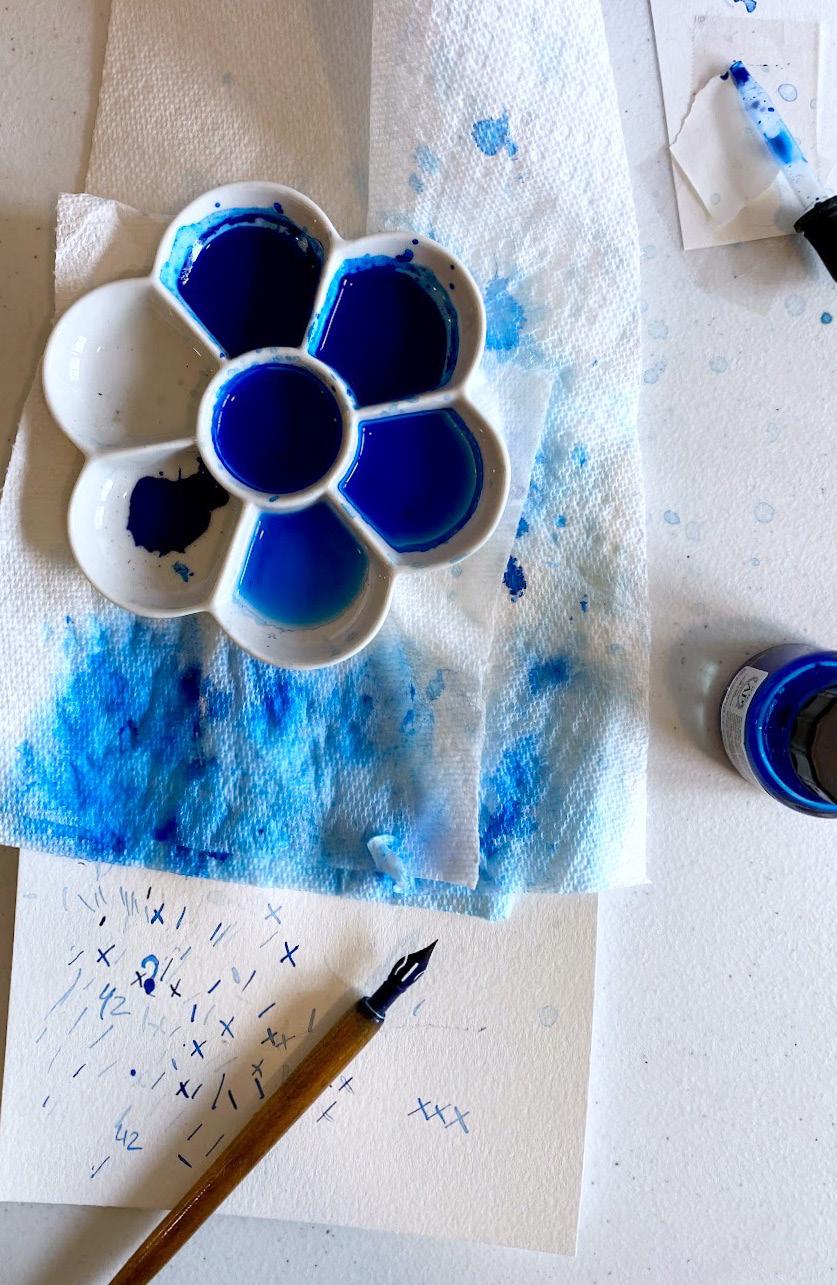
Abbi,2023
Calligraphy ink on Arches hot press paper
16 1/8 x 12 1/8 inches
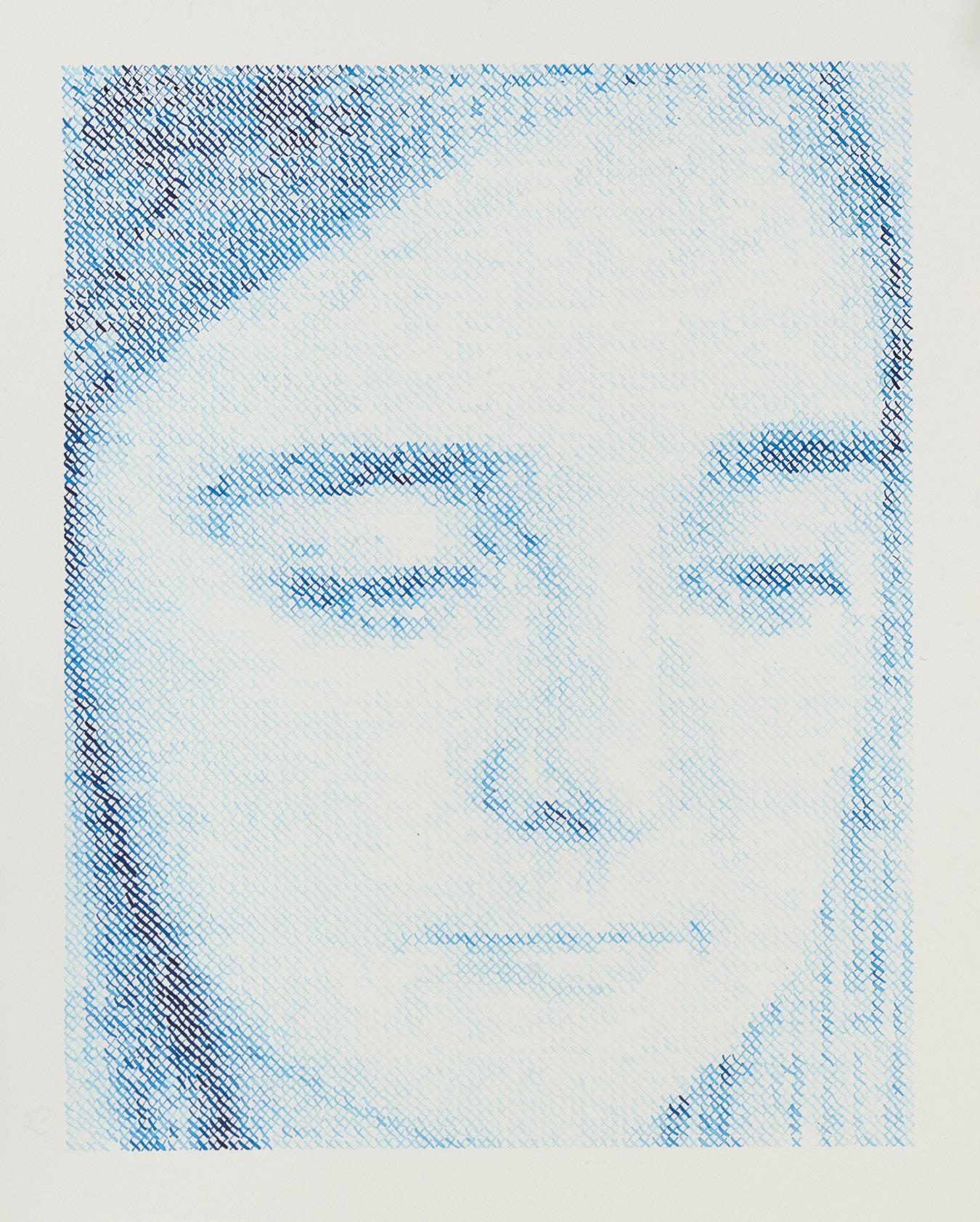
AfterBilinska,2021
Calligraphy ink on Arches hot press paper
15 1/2 x 11 3/4 inches

AfterMillet , 2021
Calligraphy Ink on Arches hot press paper
16 x 12 1/8 inches
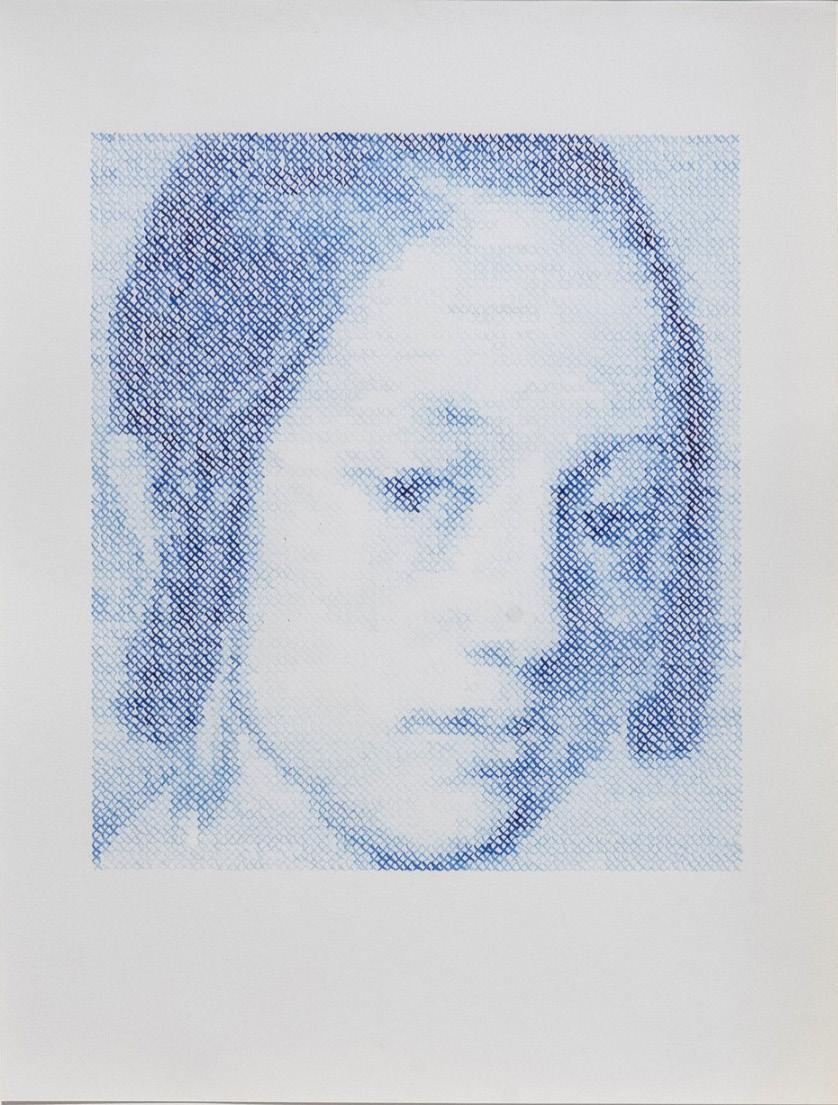
After Lucien , 2021
Calligraphy ink on Arches hot press paper
15 x 12 1/8 inches
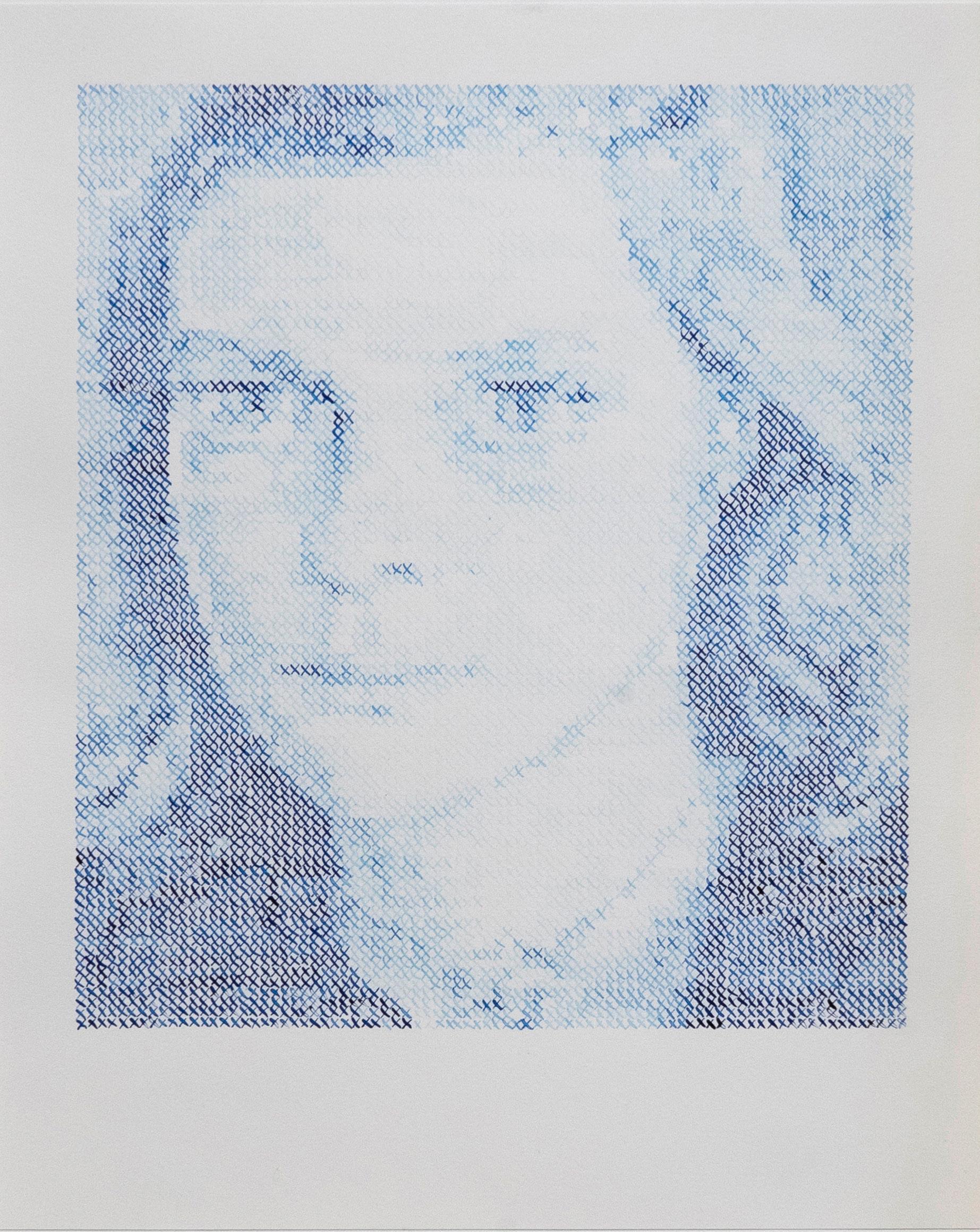
After Géricault, 2021
Calligraphy ink on Arches hot press paper
16 x 12 1/8 inches
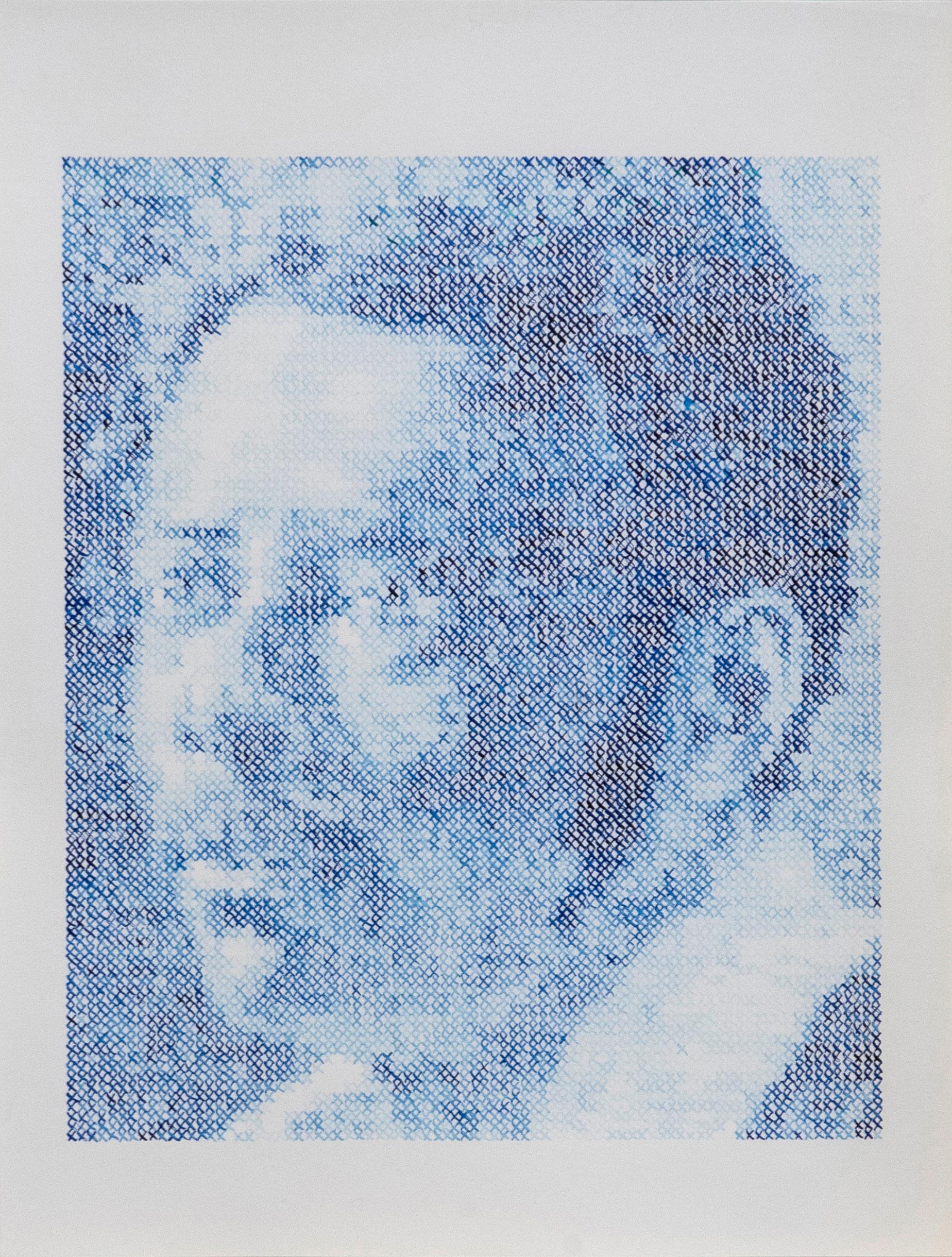 MatteoCrossStitchColoredPencil , 2022 Colored pencil on Arches paper
12 x 16 inches
MatteoCrossStitchColoredPencil , 2022 Colored pencil on Arches paper
12 x 16 inches
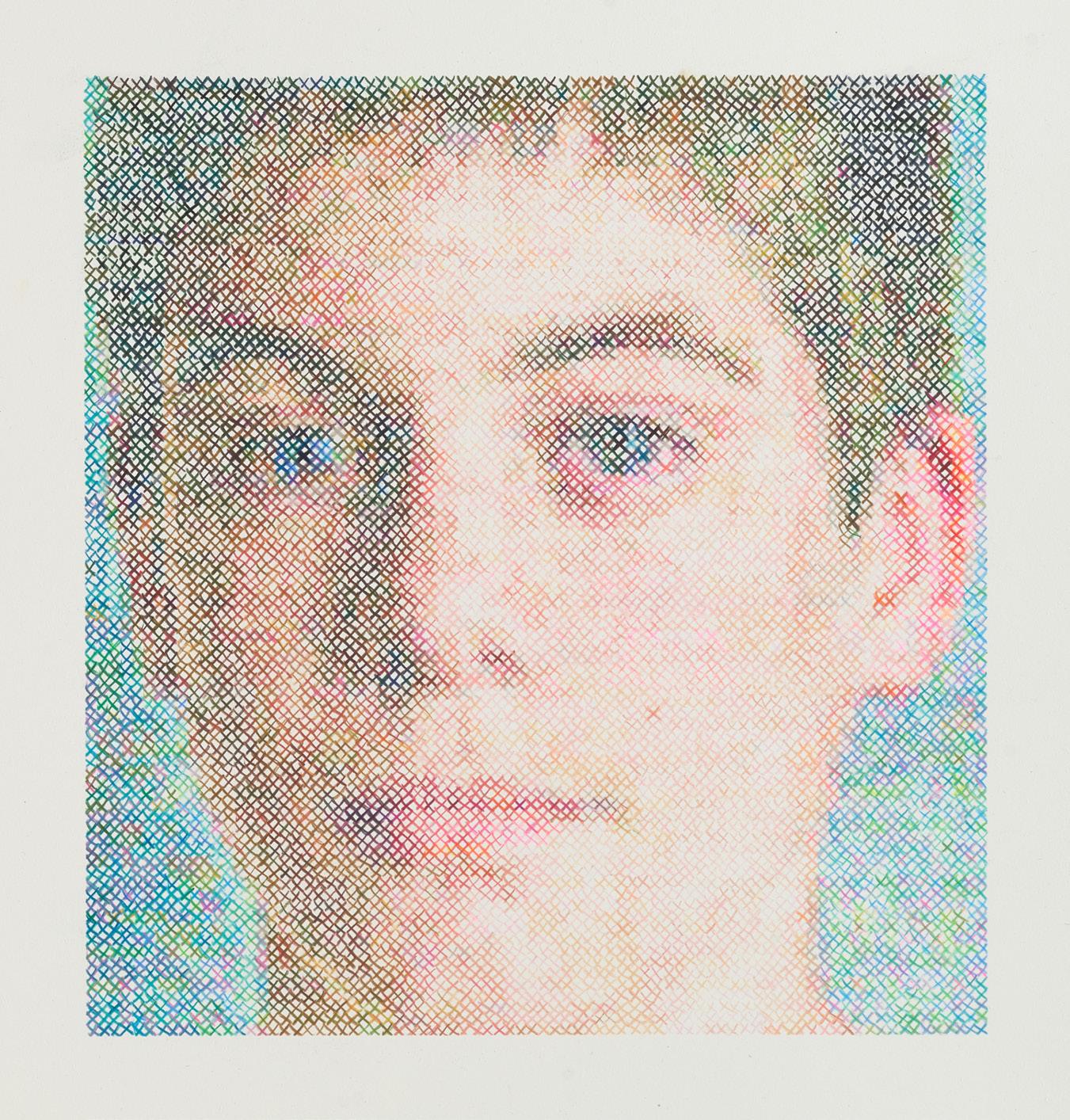
Raphaellaat21,2022
Colored pencil on paper
16 1/8 x 12 1/8 inches
 Sun , 2022
Colored pencil on paper
16 1/8 x 12 1/8 inches
Sun , 2022
Colored pencil on paper
16 1/8 x 12 1/8 inches
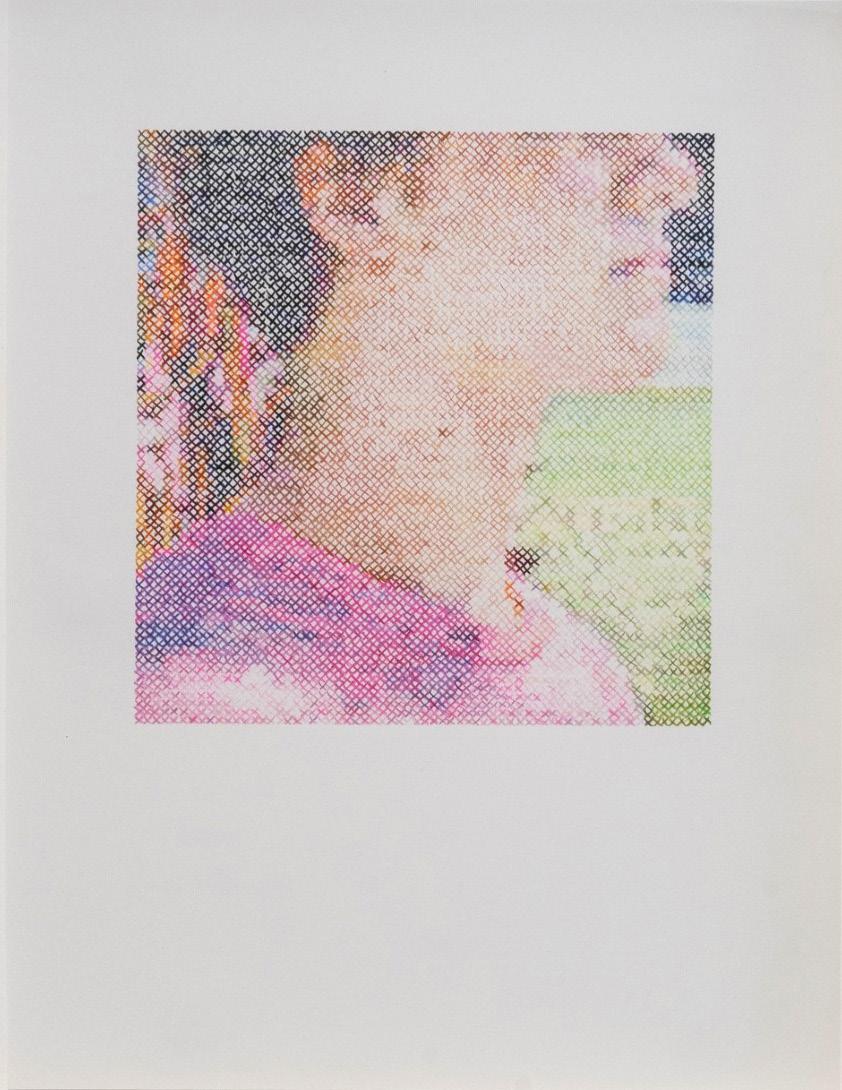
InRemembrance , 2023
Colored pencil on Arches paper
31 3/8 x 23 1/2 x 3 inches
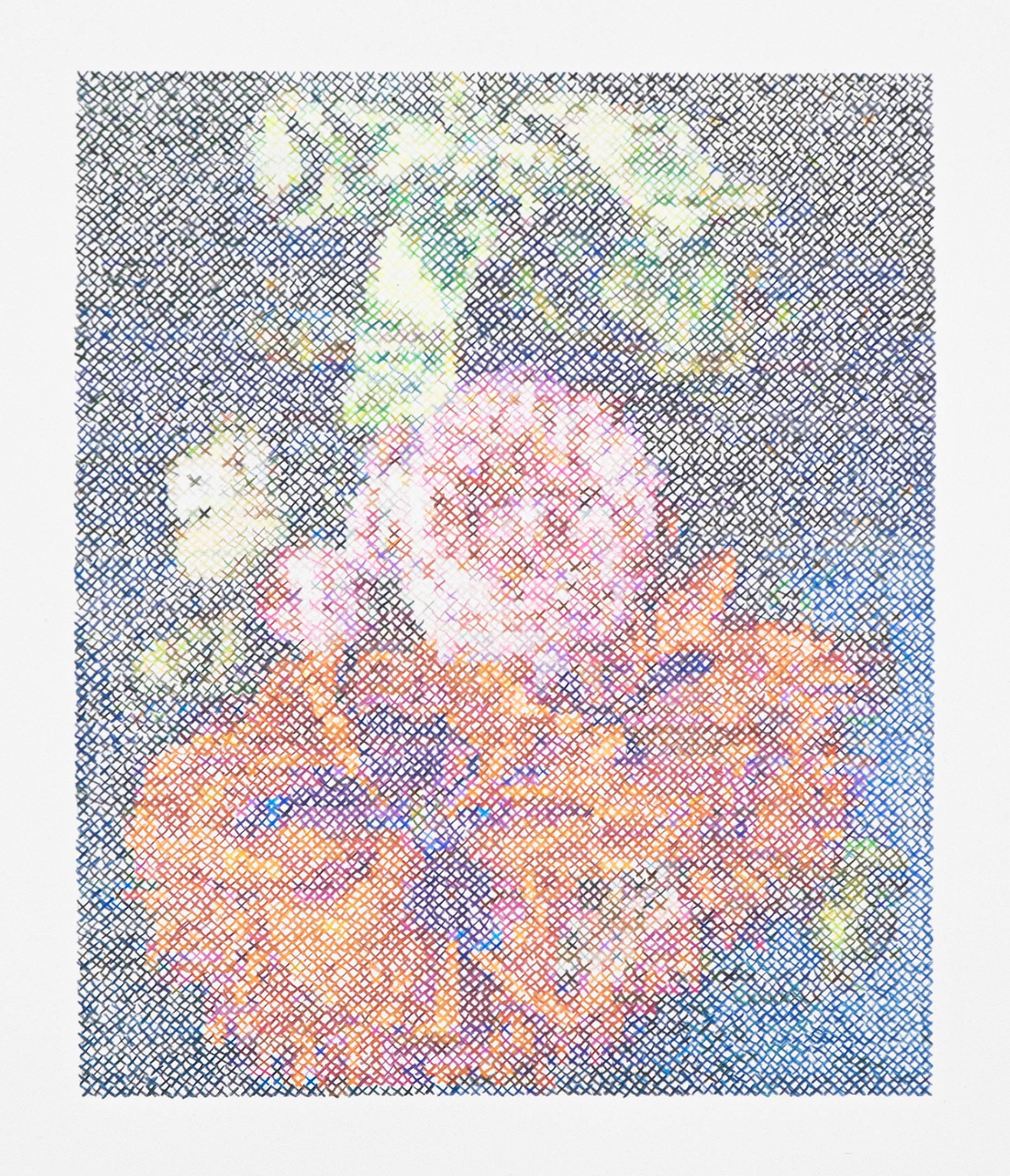
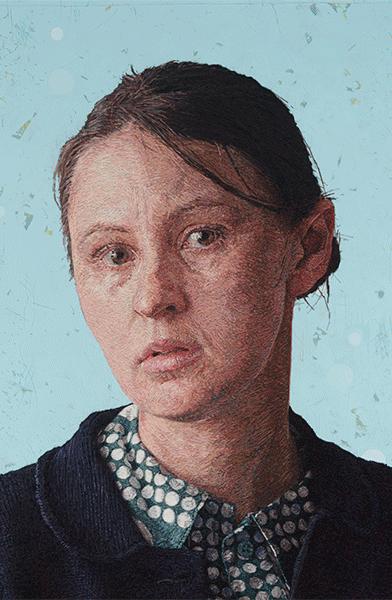
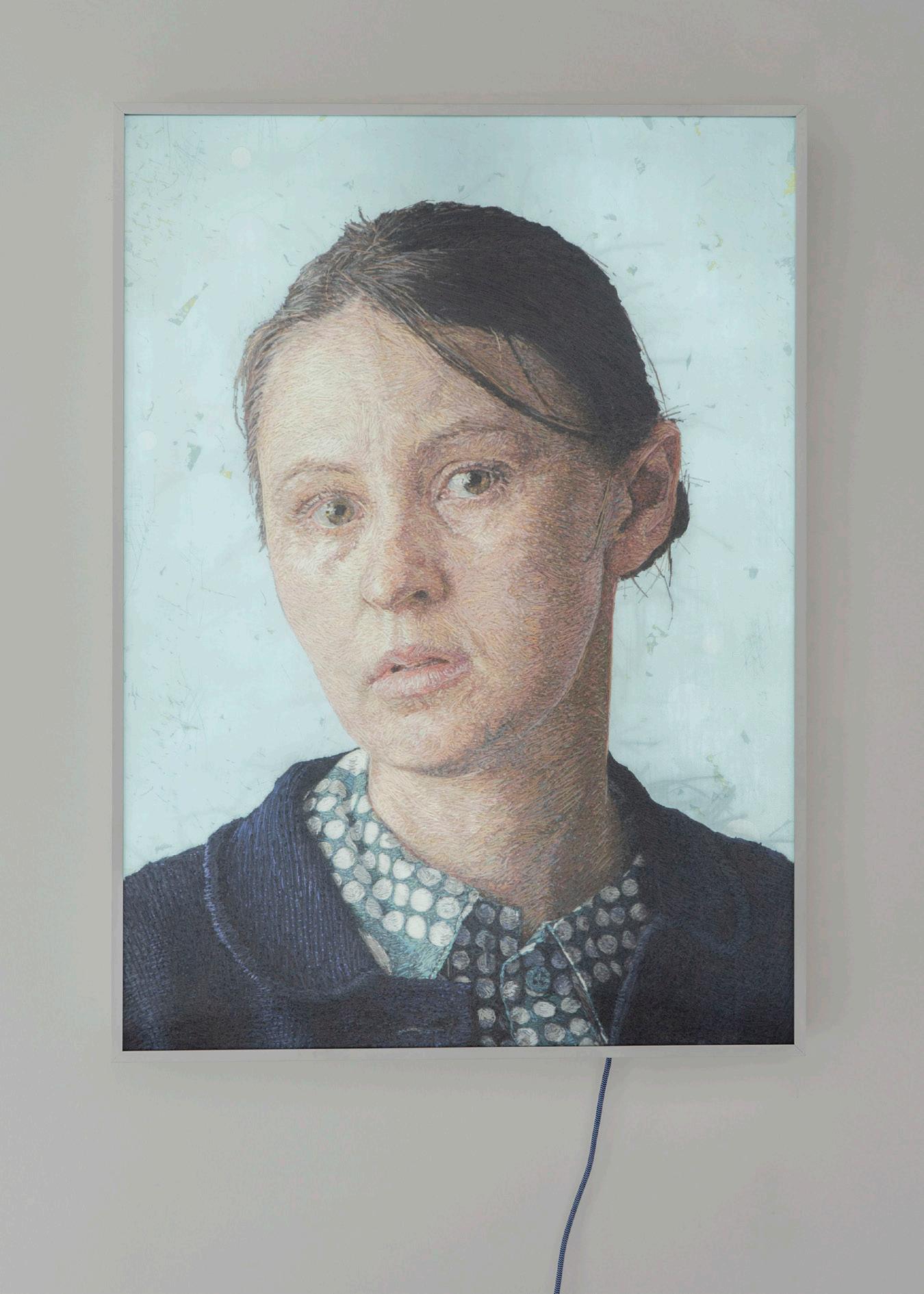 PortraitofMartina:Recto/Verso , 2023
Lenticular acrylic panel in light box
46 x 33 1/2 inches
PortraitofMartina:Recto/Verso , 2023
Lenticular acrylic panel in light box
46 x 33 1/2 inches
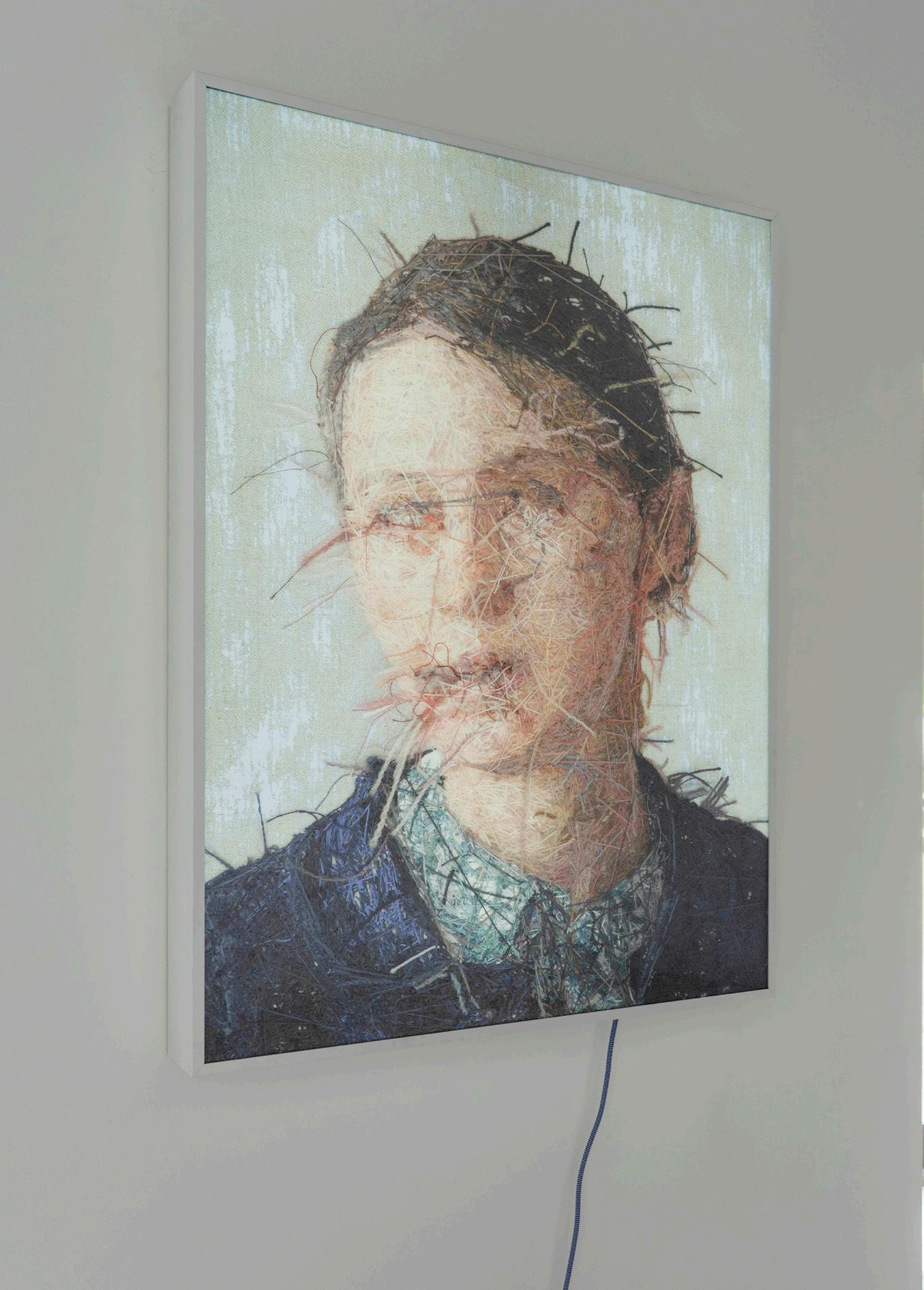
Cayce Zavaglia earned a BFA from Wheaton College in 1994 and a MFA in painting from Washington University in 1998. She mounted her first solo museum exhibition of embroideries and verso paintings in 2014 at the Contemporary Art Museum St. Louis. Her works are included in the permanent collections of the 21c Museum and the University of Maine’s Zillman Museum of Art, the West Collection and numerous private collections. Zavaglia lives and works in St. Louis, Missouri.
